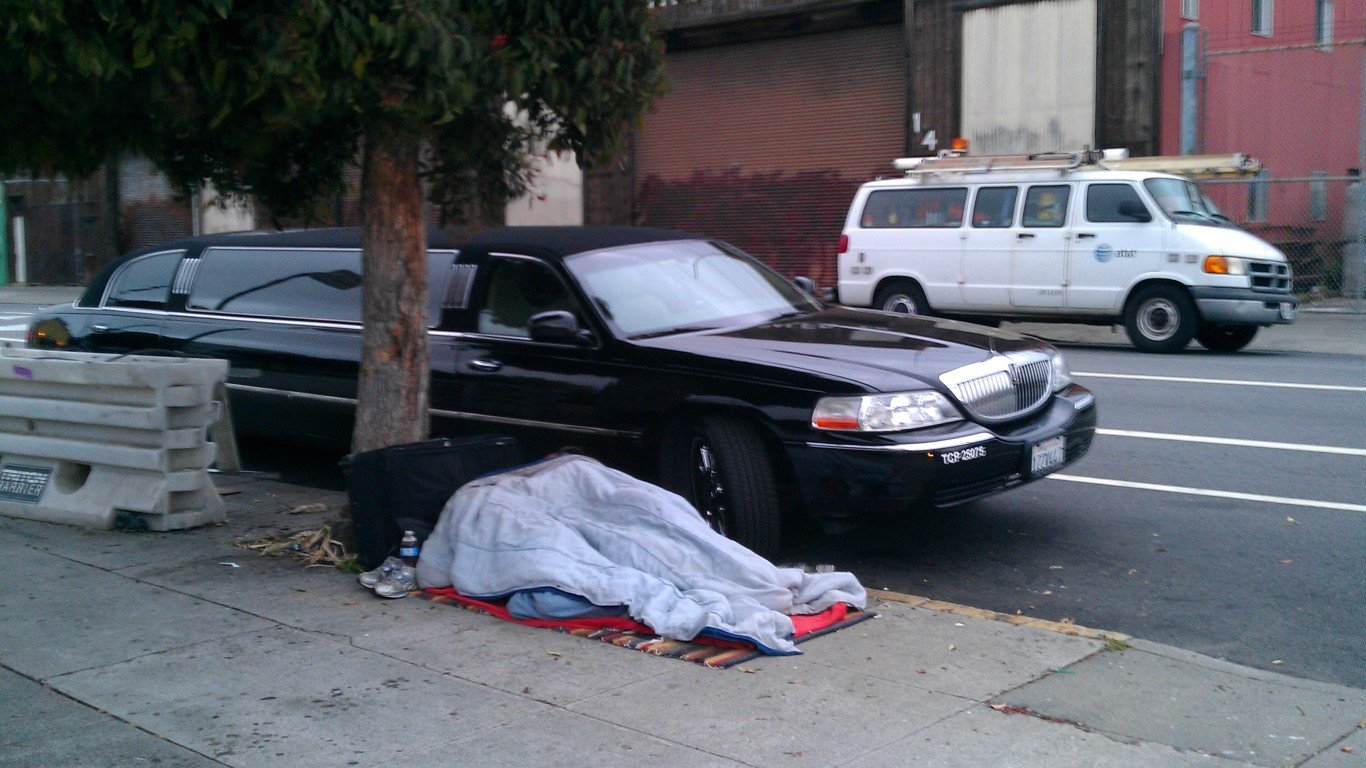

Community colleges are two-year education institutions meant to provide affordable degrees for people who have usually graduated high school but have not enrolled in schools which can give them a four-year college degree. They are often known as junior colleges. In one state, nearly 20% of the students enrolled in these schools are homeless.
There are 1,167 community colleges in the U.S. according to the American Association of Community Colleges. The enrollment in these institutions is more than 12.4 million students. Almost half of all undergraduate students in the United States attend community colleges. Homelessness among students at these institutions is prevalent. In California, the number is extraordinarily large. Nineteen percent of attendees in the largest state by population are homeless. California is among the states with the most unshelterd homeless. It also has several four-year colleges where applications are on the rise.
A study by the Hope Center for College, Community, and Justice at Temple University’s College of Education in Philadelphia, polled almost 20,000 students at 57 colleges in California. The data was collected during the fall semesters of 2016 and 2018. The report’s lead author Sara Goldrick-Rab told the Mercury News if the information is projected across all of California, it yields the 19% number. She added, “Only 6 percent of students said they were homeless,. The other 13 percent indicated their homelessness by saying where they stayed.”
Community college is inexpensive in most cases compared with four-year institutions. However, that does not mean it is affordable for everyone. According to the Community College Review, among public community colleges, the annual tuition for in-state students is $4,835 per year. For out of state students, the figure rises to $8,594. The data from the study cover 2018 and 2019.
Among the reasons that students do not turn to shelters which are available is that people who consider themselves relatively well educated sometimes have problems admitting to others they are homeless. Goldrick-Rab commented, “And many students don’t go to shelters because these are well-educated people who don’t want to be stigmatized.”
Proposed solutions, at least in California, are for more state support of these students. They also might be supported, financially and in terms of food and housing, by local communities. In the meantime, a number of nearly 20% is high enough that finding a solution for most of these people will take a very long time.
Essential Tips for Investing: Sponsored
A financial advisor can help you understand the advantages and disadvantages of investment properties. Finding a qualified financial advisor doesn’t have to be hard. SmartAsset’s free tool matches you with up to three financial advisors who serve your area, and you can interview your advisor matches at no cost to decide which one is right for you. If you’re ready to find an advisor who can help you achieve your financial goals, get started now.
Investing in real estate can diversify your portfolio. But expanding your horizons may add additional costs. If you’re an investor looking to minimize expenses, consider checking out online brokerages. They often offer low investment fees, helping you maximize your profit.
Thank you for reading! Have some feedback for us?
Contact the 24/7 Wall St. editorial team.



